© ROOT-NATION.com - Use of content is permitted with a backlink.
This material is a partial response to numerous comments on our YouTube channel, mostly comments under the video about Goodram RAM. While the quantity of comments is valuable to us, the topic of these comments isn’t always accurate. Therefore, today I’m taking in hand a set of Goodram DDR4 CL22 RAM modules – these are simple DDR4 CL22 modules. And the main thing I want to tell you about these devices: I don’t recommend overclocking them… Let’s talk about it.
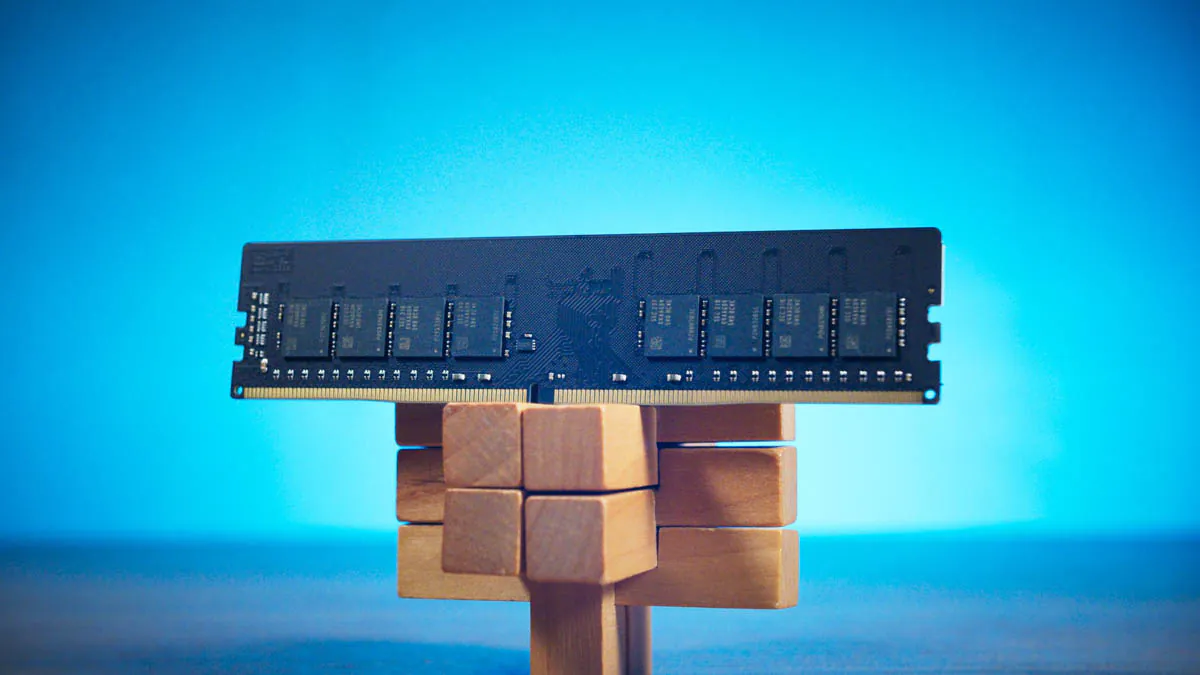
My words mean nothing but what I said. Because I value high-speed memory. And the benefits it brings. The problem I see in this particular example is the unjustified ratio of benefits to hemorrhoids, and I’m a very pragmatic person. And the problem is that there is a better way than rough memory overclocking.
Video about overclocking and Goodram DDR4 CL22

RAM vs. CPU
The RAM frequency is typically associated with the CPU frequency. The higher the frequency, the better the PC performs. This sounds logical.
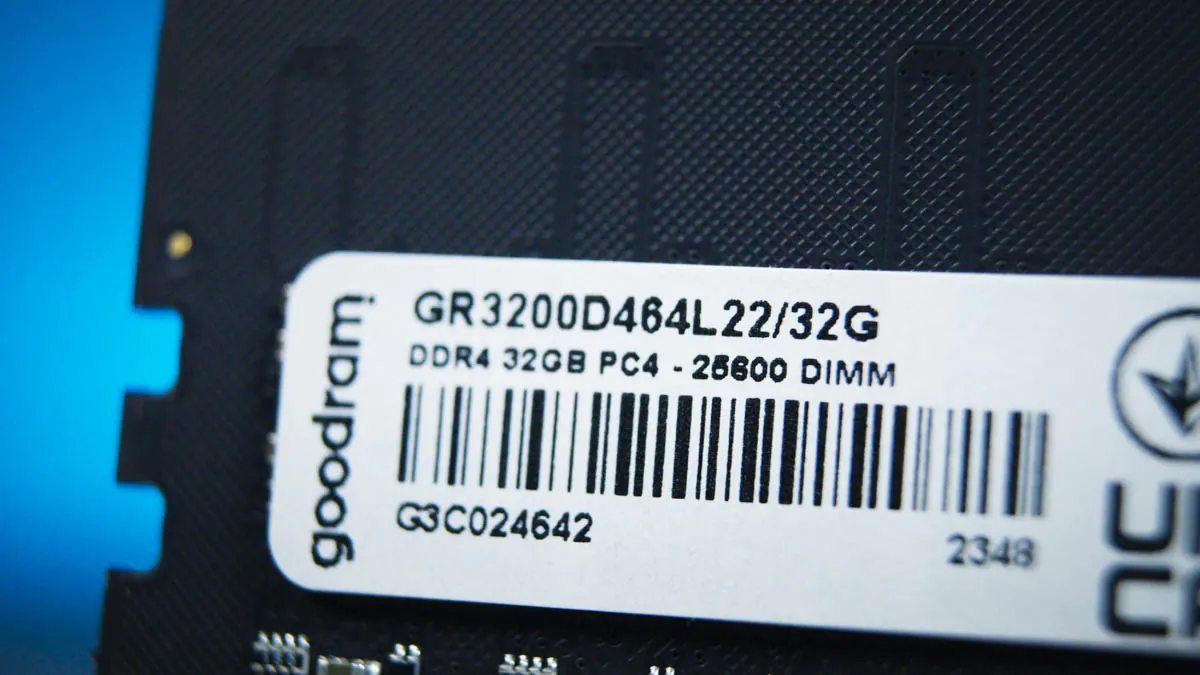
But if we compare the relatively cheap non-radiator Goodram DDR4 at 3200 MHz with my review kit from last year, which is currently installed in my test bench – the IRDM Pro at 3600 MHz, the price comparison will be relatively odd. The IRDM Pro is more expensive, obviously. But right now – they’re both very affordable.
The difference in frequency is 400 MHz, or megatransfers per second. Because the actual RAM frequency in the case of DDR, or Double Data Rate, is actually half of what is marketed. But we talk about “megahertz” because it’s more convenient and familiar to us, and for the manufacturer, it sounds better.
Timings
There are also timings. These are the numbers: 18-22-22. Timing, or latency, is an indicator of how quickly a PC can access the RAM. And the frequency is how quickly the data is poured into the chip after that. You see, this is also an important indicator.
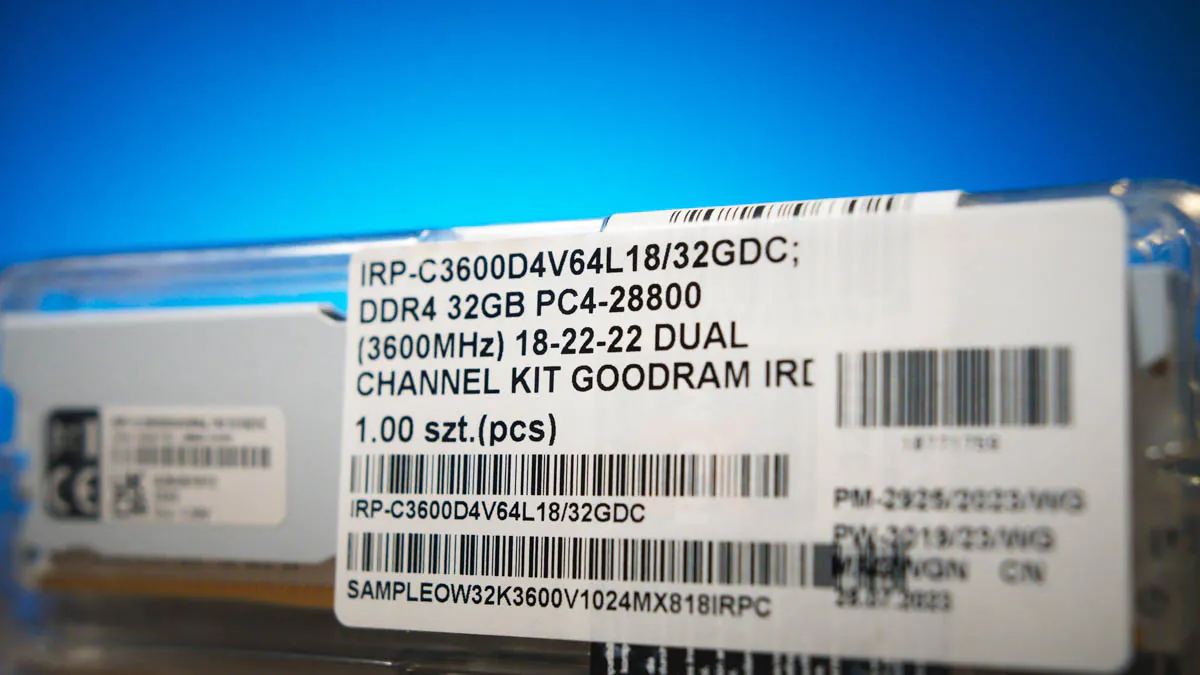
How important is it? Despite the giant leap from, let’s say, DDR2 to DDR4 in terms of frequency – from 800 MHz to 3200 MHz… Timings also increased from 5 to 22. So, 5 steps forward, 4 steps back. Therefore, memory performance does not increase directly with increasing frequency.
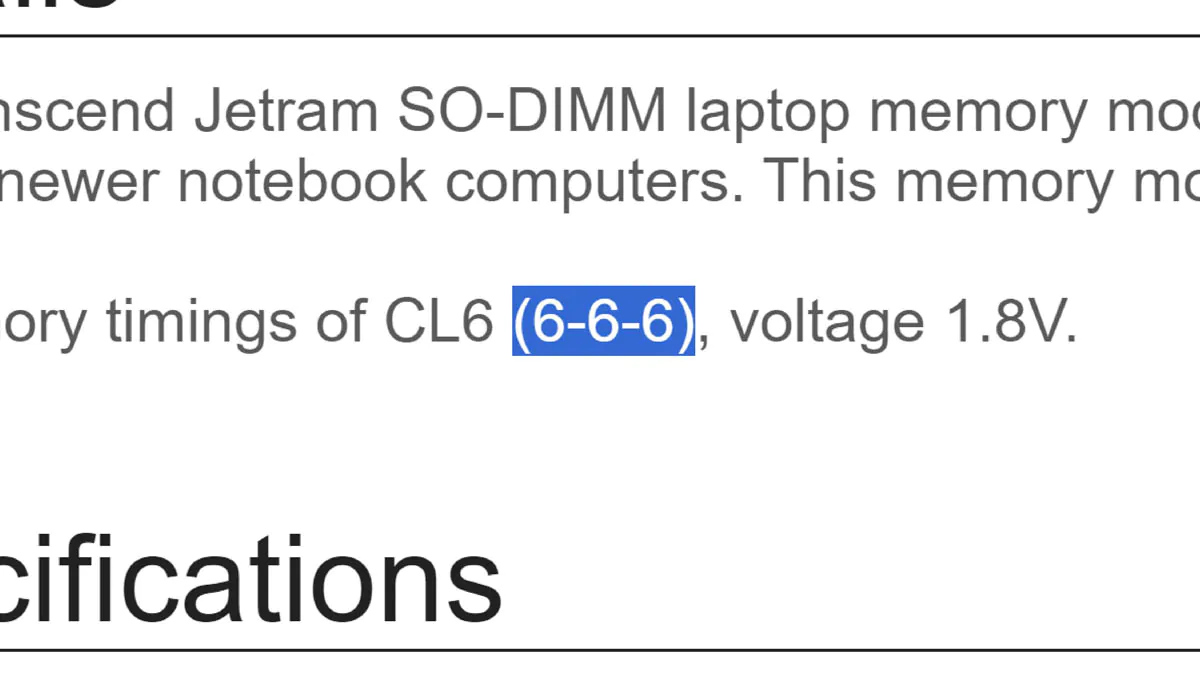
And each of the numbers in the timing list is responsible for its own delay. There are usually four of them. The first is the delay in accessing the RAM itself. It is common or CAS. Next, the RAM stores data in the table. And to find certain data, it first goes through the rows, then moves on to the columns.
For a visualization of this process and all other timings, see the video review above.
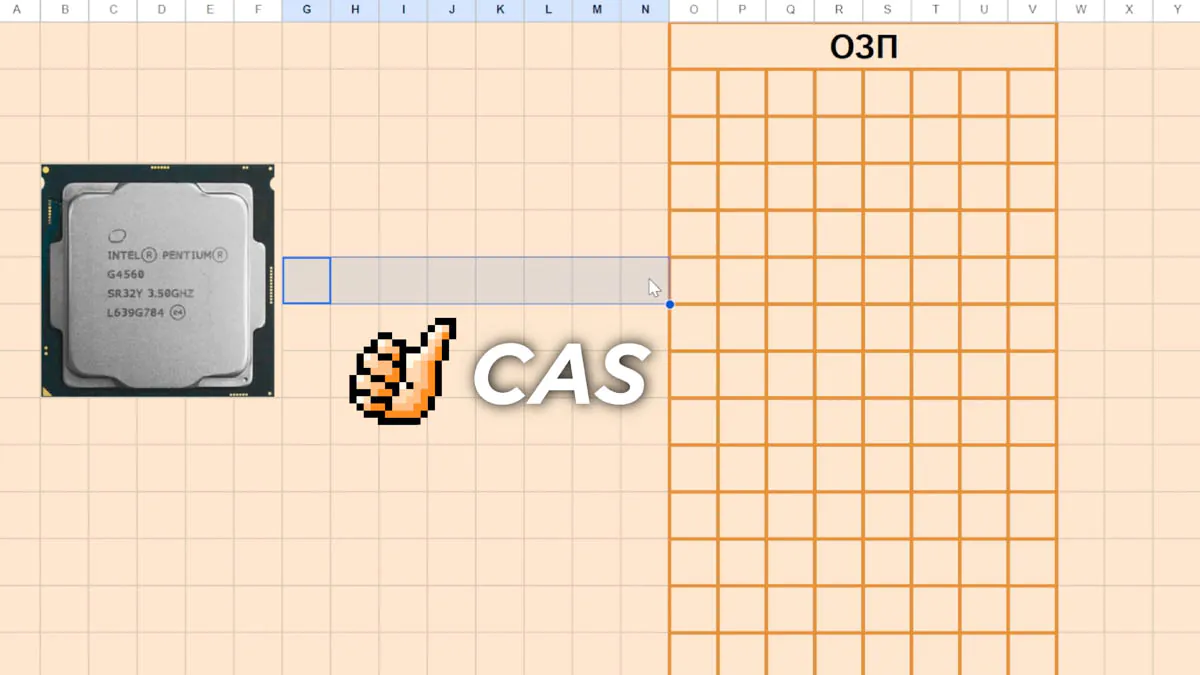
So, here’s the thing, the first value represents the delay time. The second value represents the time for this transition. The third number is the time for transitioning from the old row to the new one. And the fourth number is the highest; it usually shows how long the row should be “open” to retrieve or write data from it.
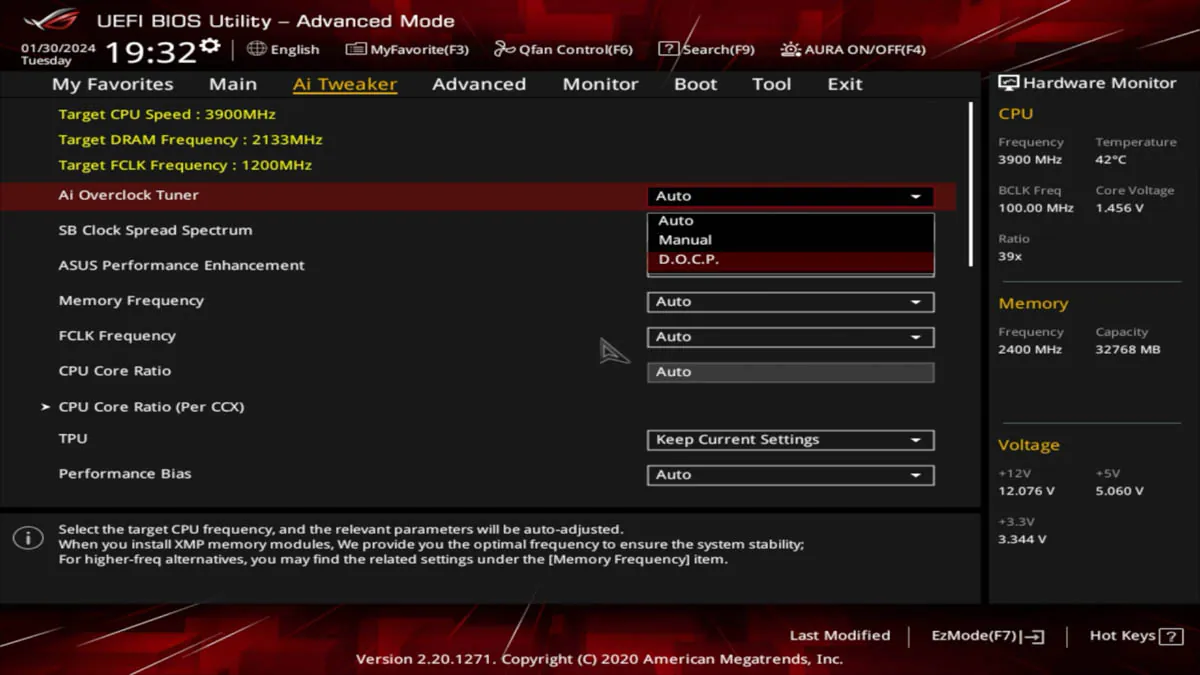
The benefits of timings
So, RAM is like a table. It takes time to open it, to access all the rows, measured in clock cycles. It also takes time to transition from row to column. Changing rows, moving to a new row, also takes time. And you need to know how quickly data changes to move to a new row.
Read also: What are sacrificial SSDs and why are they worth it? Using the Goodram PX600 1 TB as an example
Each of the timings is useful in its own way. The best example is the first one, CAS. We multiply the number of clock cycles by 2000, divide by the frequency, and get the delay in nanoseconds. And since the higher the frequency, the higher the timing usually is – the balance between these components is responsible for changing the result, namely – the actual speed of memory operation.
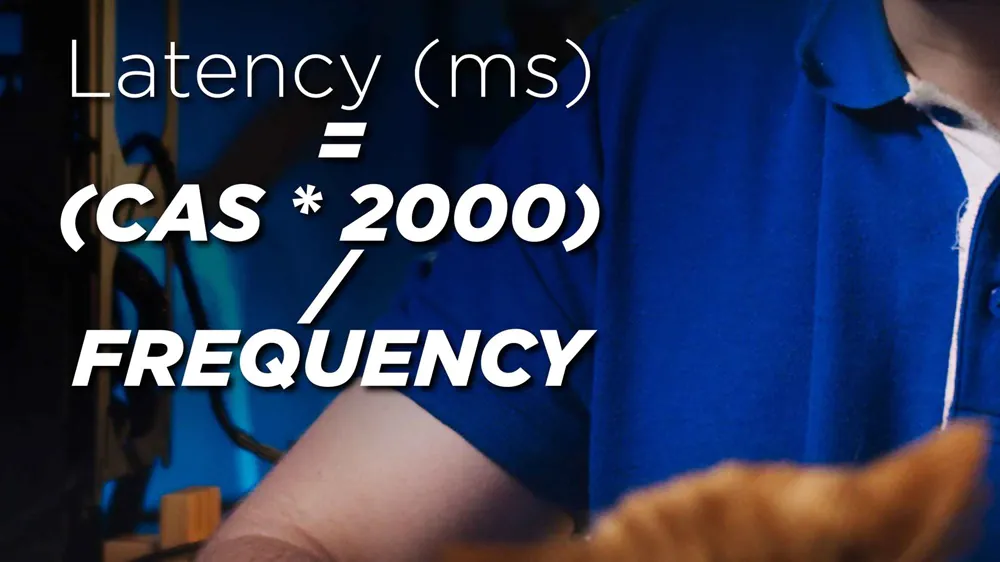
Problem
But here’s the problem. Let’s take the cheapest RAM, 2133 MHz with CL14 timings. For example, Goodram, 3200 MHz CL22, and IRDM Pro, 3600 MHz CL18. We get timings of 13, almost 14, and 10 respectively. However, in games, for example, the better the RAM, the smaller the timings and the higher the frequencies – the higher the FPS. Specifically – the minimum frame rate, meaning frame drops, will be less noticeable.
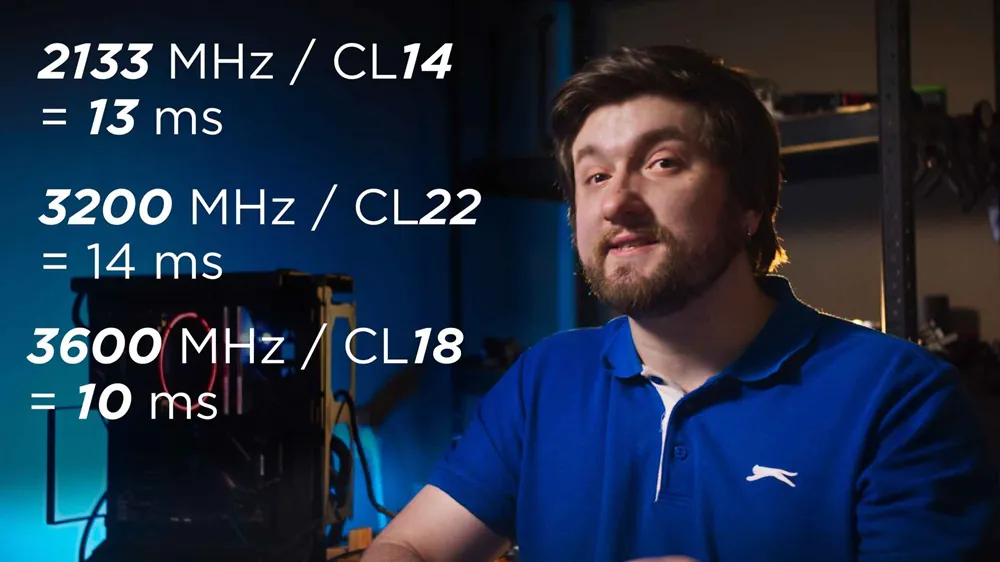
But they won’t disappear completely. They’ll just be less noticeable. Such FPS drops depend on both games and other components. Memory testing is usually done on flagship systems using top processors like Core i9, Ryzen 9, and graphics cards like RTX 3090 and 4090. But what if you have a Ryzen 5 and RTX 3060? Then you might not even notice the difference between minimum 40 and 50 FPS.

Yes, RAM does affect productivity. But it’s very situational. And it’s much more important to have a larger memory capacity than a higher frequency or lower latency module. Because when there’s not enough capacity, the system either crashes or starts writing data to the disk in a swap file.
And also, for each system, there’s a sweet spot. After crossing it, the productivity gain for every hypothetical 100 MHz will be within the margin of statistical error. For Ryzen 5000, for example, this is 3600 MHz. So, 3700 MHz won’t bring noticeable benefits.
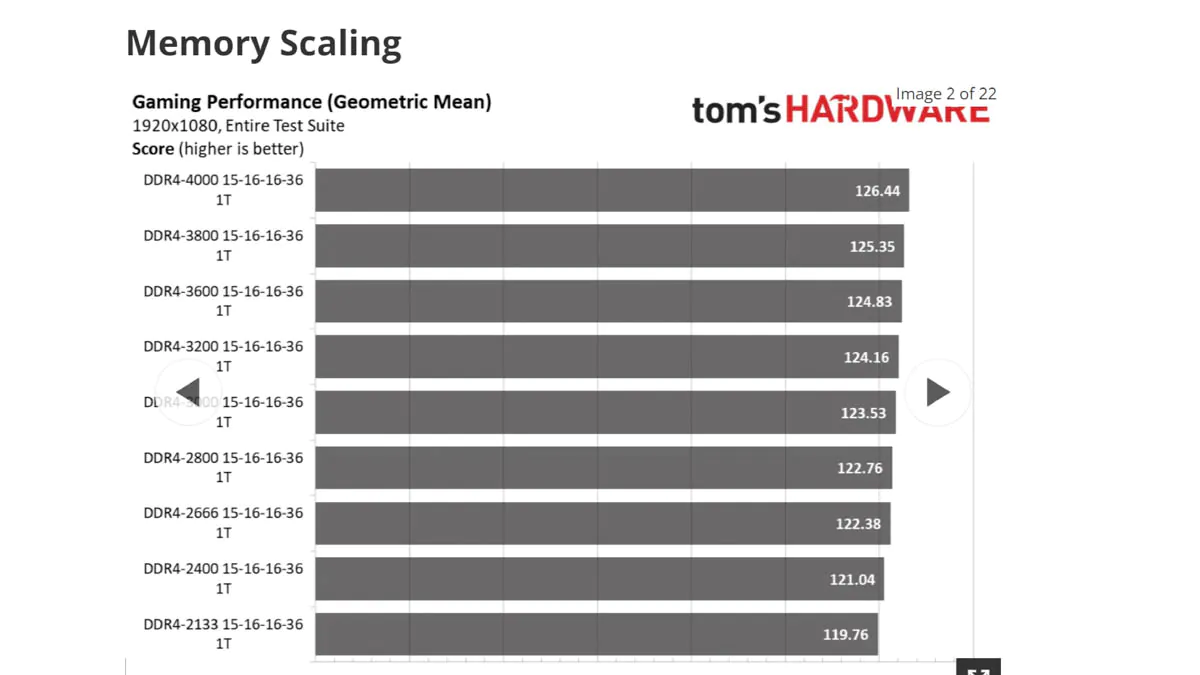
Wait, don’t overclock it!
So why don’t I recommend overclocking RAM? Because, for example, on older systems, if your combination of frequency and timings is incompatible with the “quality” of your specific RAM stick, specifically your memory chips, there’s a chance that you won’t even be able to enter BIOS because the system won’t boot.
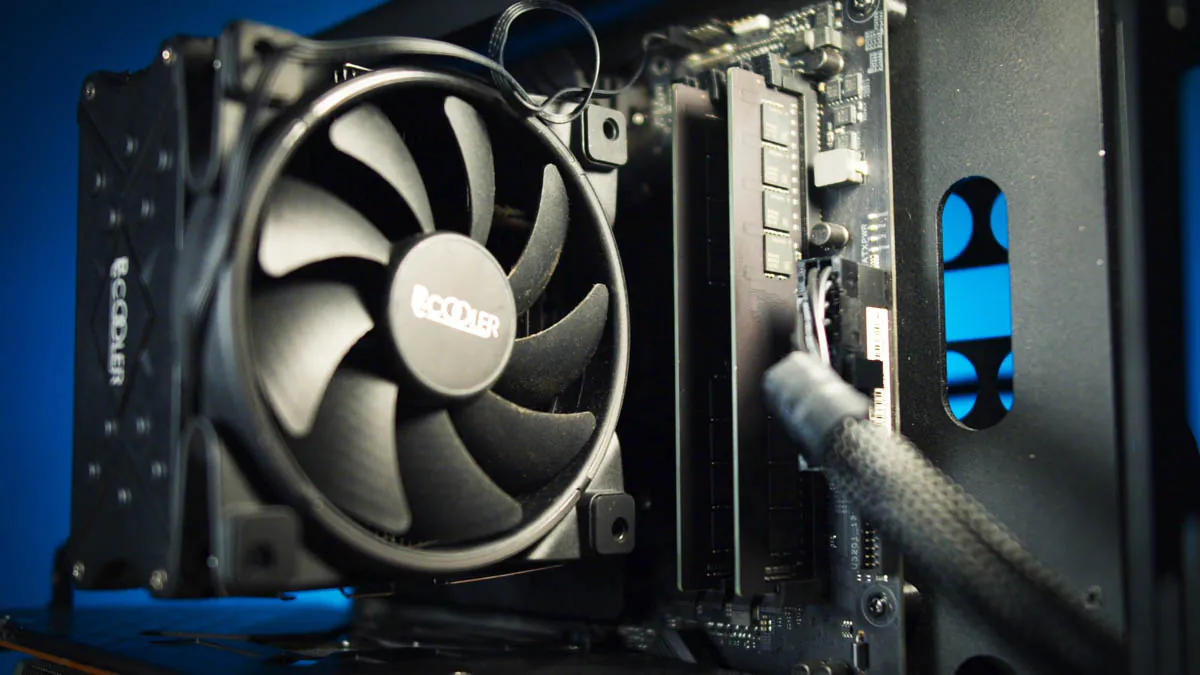
And to start your PC, you’ll have to reset BIOS settings by either removing the battery or shorting the CLEAR CMOS contact for 5 seconds. In doing so, there’s always a risk of bricking the BIOS if you forget to disconnect the power supply from the mains, and, for example, a power surge occurs.

And also, the chosen combination of frequency and timings might, for instance, pass through BIOS but crash into a BSOD during active load. Sometimes, even periodically. So, for example, your RAM might withstand 15 minutes of video rendering, but when you have a particularly heavy project that you leave rendering overnight, well, you can imagine… The consequences can be dire.
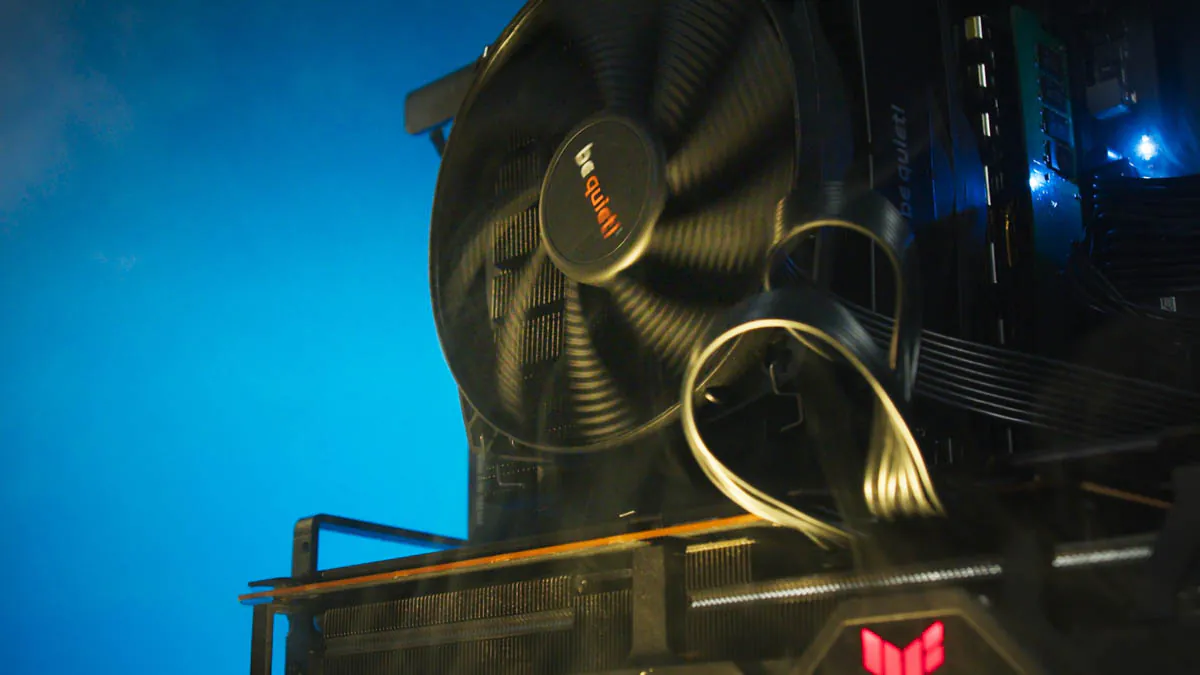
So, if you have Goodram 3200 MHz CL22, you can try to overclock it to 3600 MHz, but you won’t get any significant benefits in gaming or work, even if you keep the timings the same. And if you have IRDM 3600 MHz CL18, overclocking it won’t have any benefits at all.
The overclocking potential is undoubtedly influenced by the total capacity of the RAM – the less, the better. And memory steppings. This is like generations, so to speak. In Samsung, for example, there are A-die, B, C, D, and M. Some steppings of certain manufacturers overclock significantly better and more stably. And perhaps you enjoy overclocking RAM, you enjoy honing your skills and optimizing your PC, squeezing out maximum performance. That’s great, and you’re doing a great job.
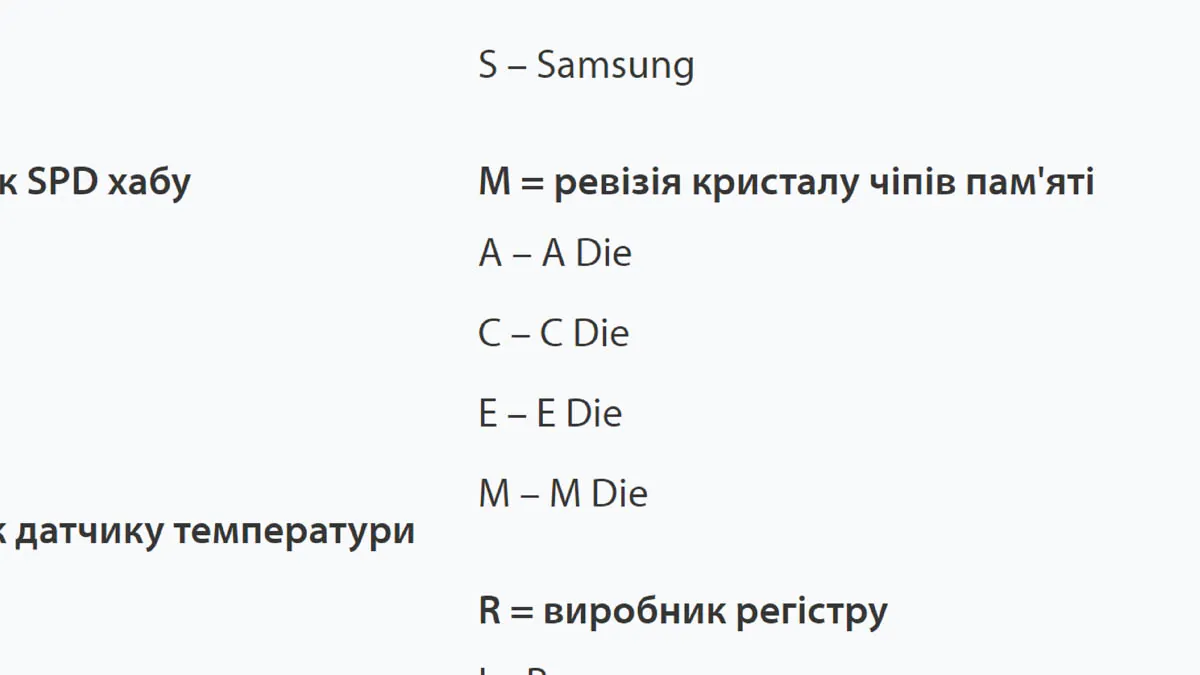
But I cannot and will not recommend doing it. I don’t do it myself because I don’t see any benefit, neither for myself nor for others. I won’t sit and tweak every timing, experiment, because I have a job. I have three jobs. And only one of them is making videos on YouTube. Overclocking RAM is an irrational waste of time because the gain is minuscule. And it’s a risk to the stability of your PC. And I often have overnight renders.
There is a solution!
So what do I recommend instead? Buy. More expensive. RAM. I’m not against high frequencies. I’m against overclocking. Frequency can be purchased. And the price difference between 3600 and 3200 RAM modules is absolutely not critical. And I recommend buying more expensive modules only for those who want to squeeze the maximum out of their PC. Even with DDR5, this is relevant now, even at very high frequencies.
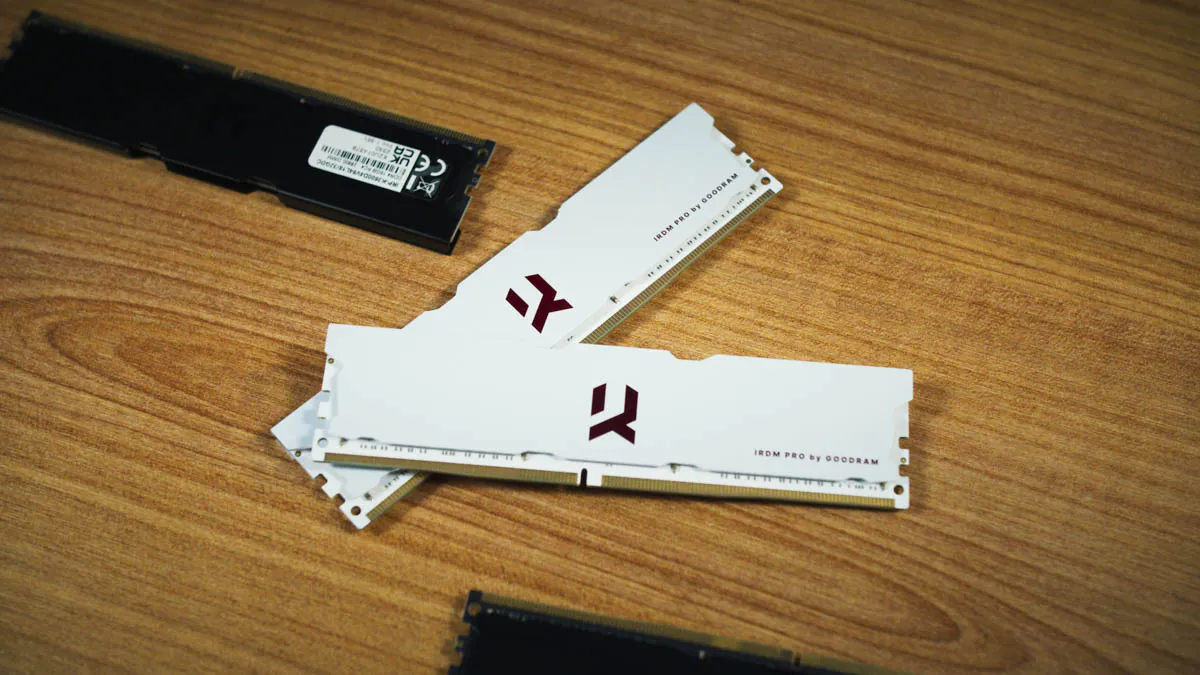
Also, don’t forget about XMP and AMD Expo, or DOCP in some manufacturers’ BIOS settings. Go into the BIOS once, enable the overclocking profile – and you’re good to go. I support this even more. If you really want to overclock RAM, first, choose a motherboard with overclocking support. Not all motherboards have this feature.

Next, look for motherboards that, in case of BIOS failure to boot, automatically reset themselves. Or buy an external jumper with a button. You can connect it to the CLEAR CMOS contacts and reset the motherboard without struggling and without using a flashlight every time to find the jumper. You can also connect it instead of the power button on the case, for example, if the button breaks.
Summary
Just in case, but one last time – I’m not against high frequency. Whether it’s Goodram DDR4 CL22 or IRDM Pro 3600 MHz CL18. Just don’t be obsessed with it, and if you are obsessed, don’t try to drag others into this topic. Overclocking is interesting. Both RAM and the processor. But the PC should work. Not just overclock.
Read also:
- be quiet! Dark Rock Pro 5: CPU Сooler Review
- Be quiet! Shadow Base 800 DX Computer Case Review
- SATA vs M.2 SATA vs M.2 NVMe: what makes them different and which SSD is better?

